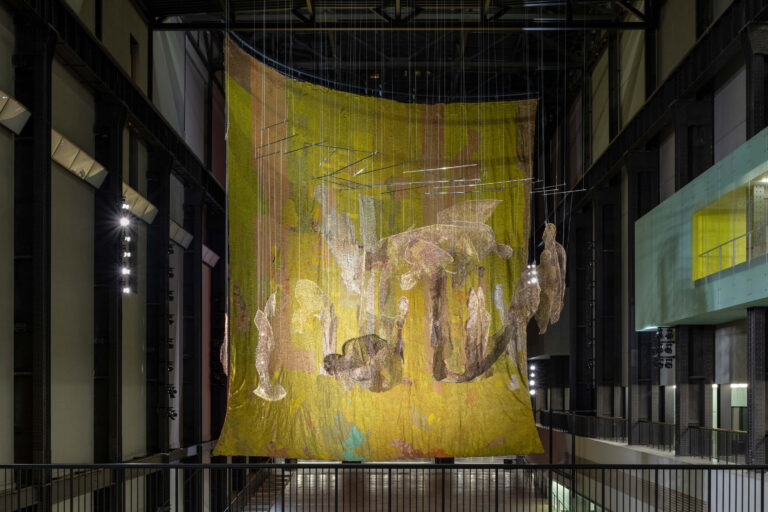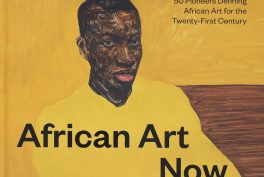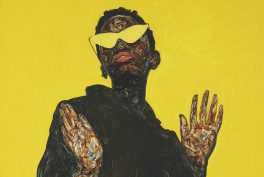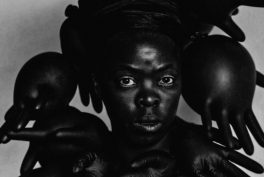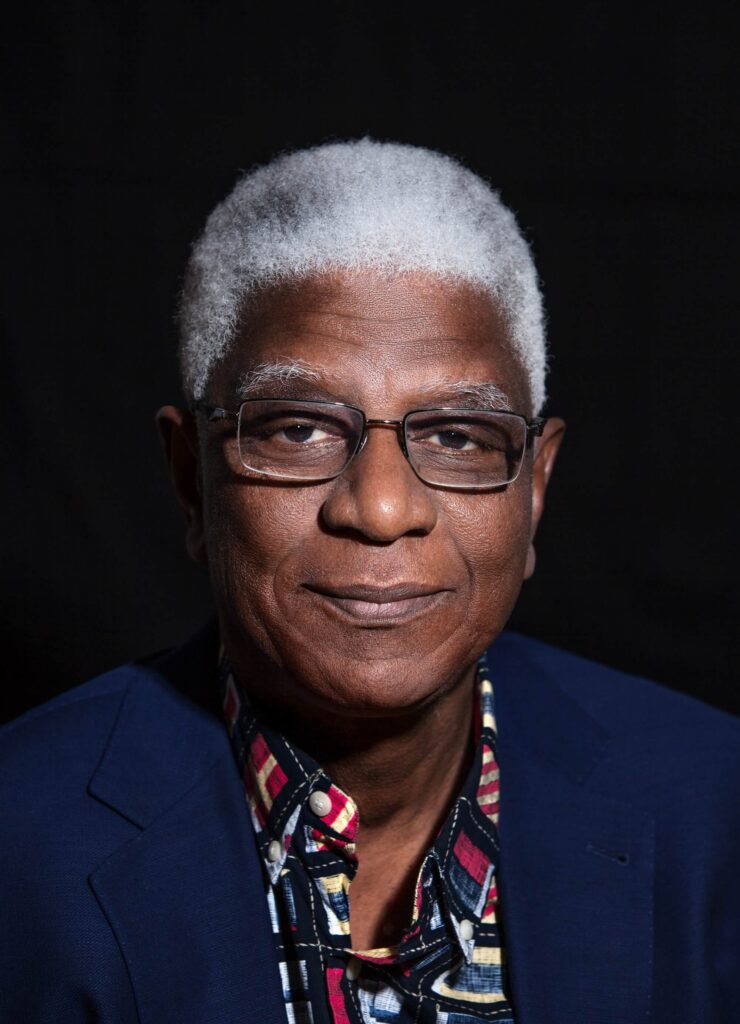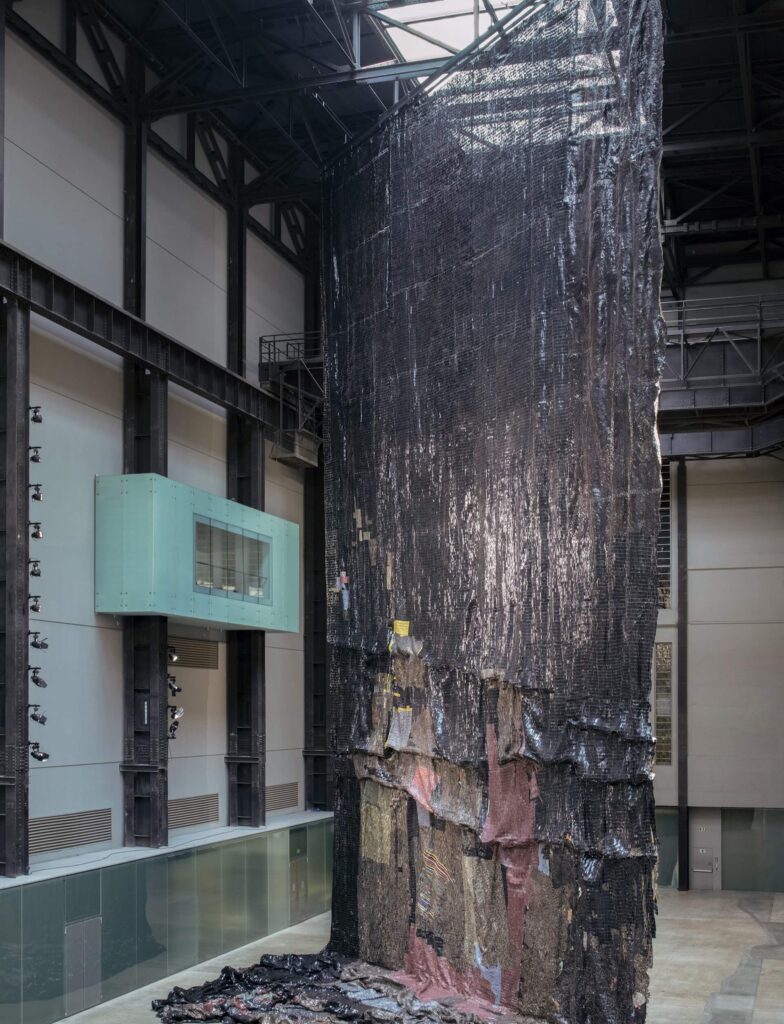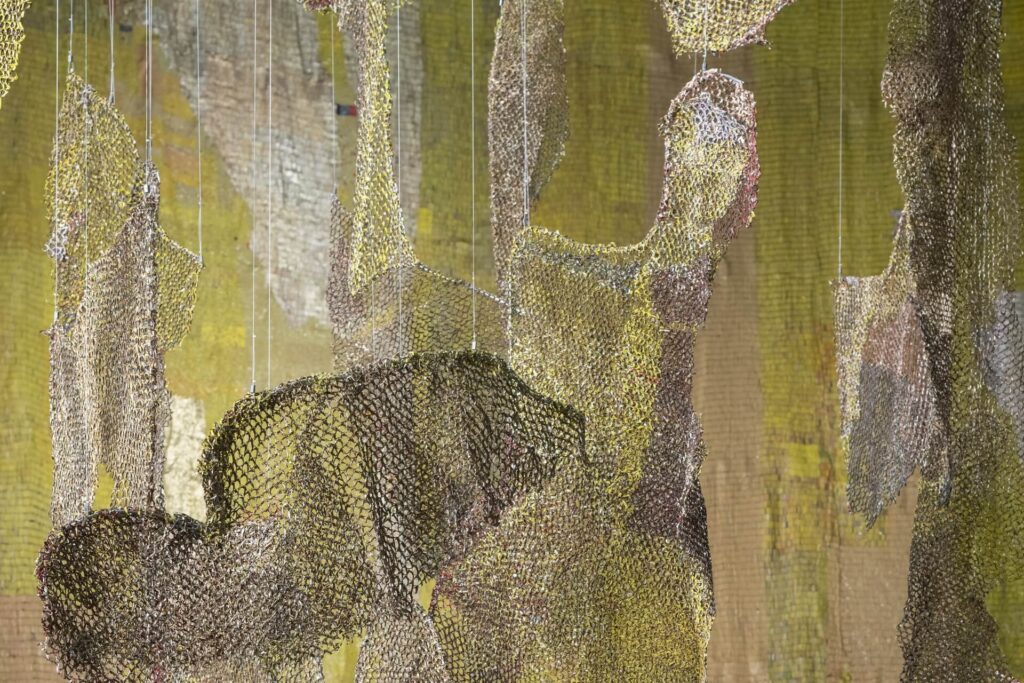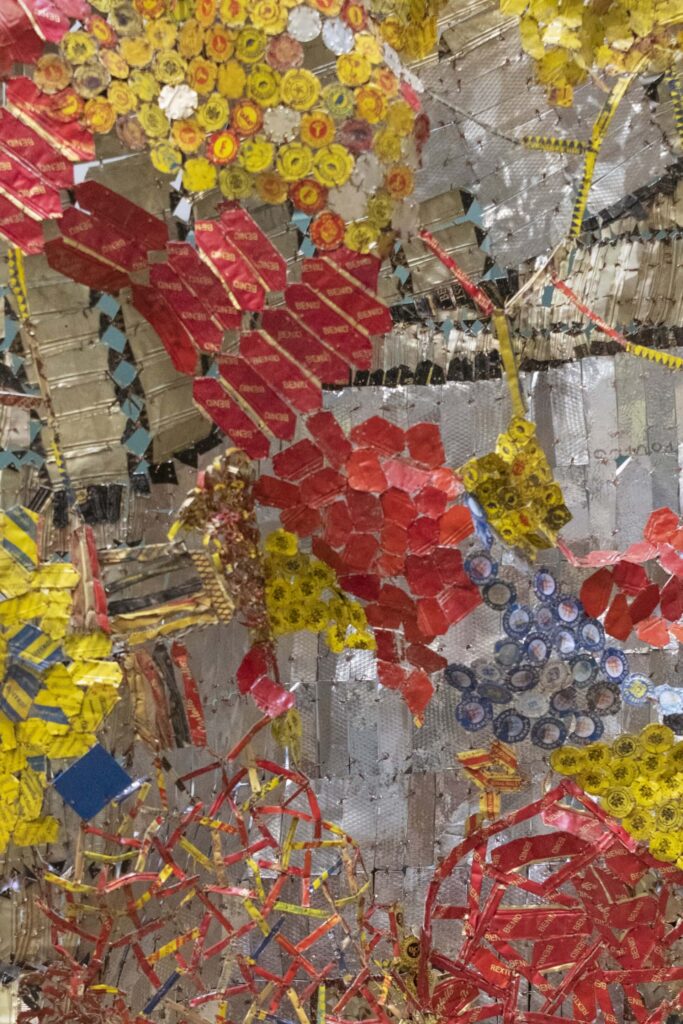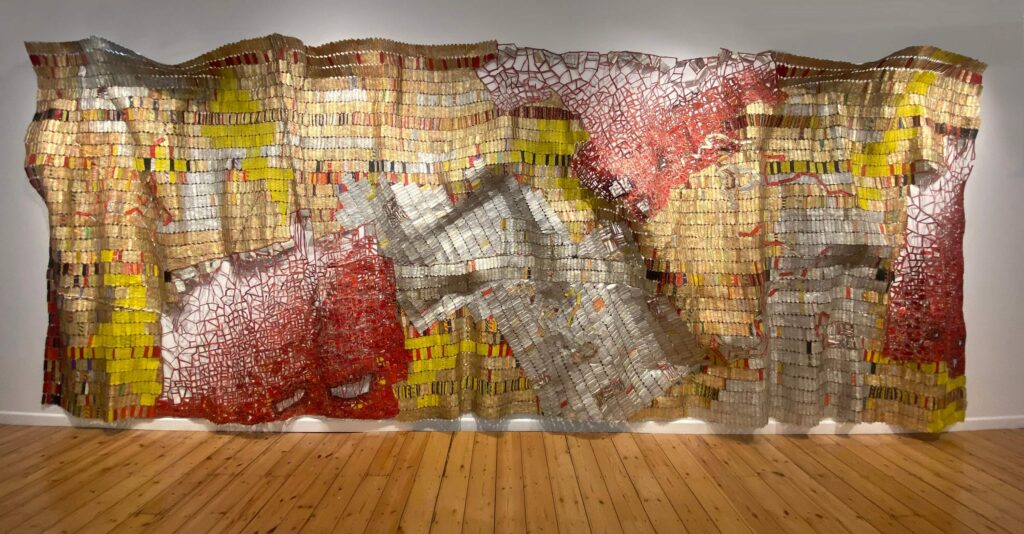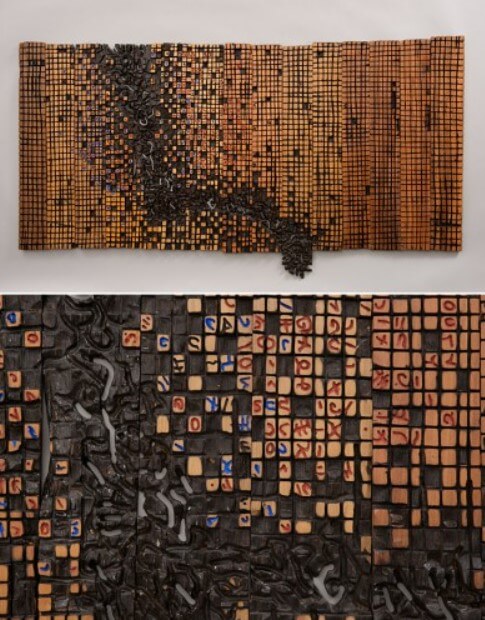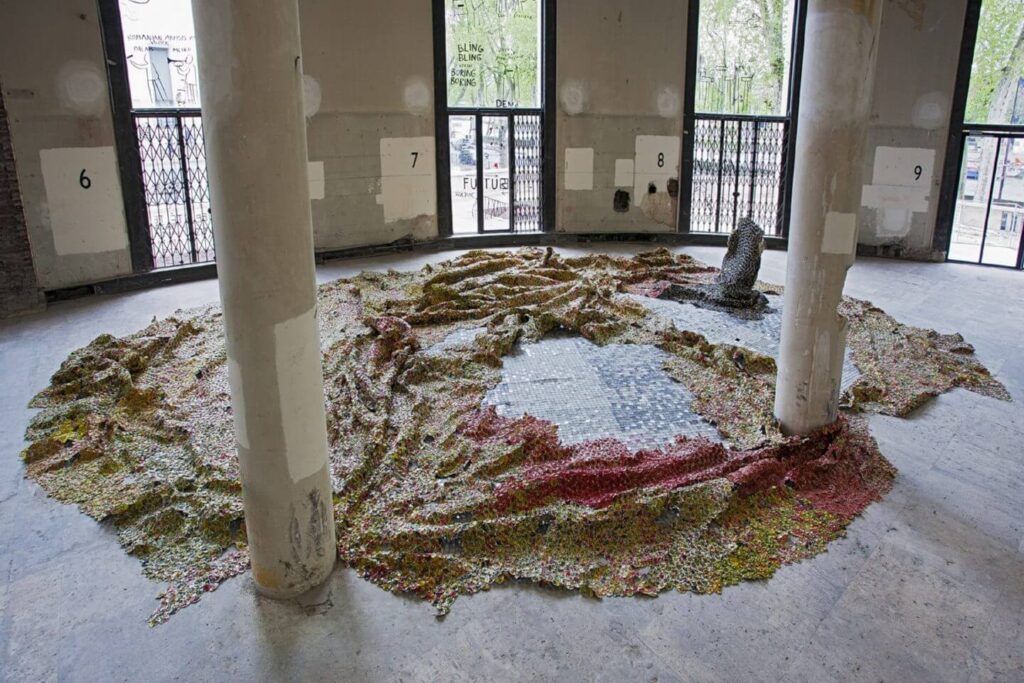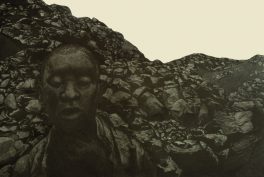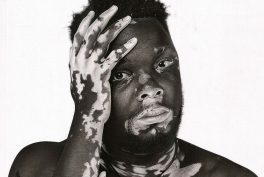4. Urgent Topics
Through sophisticated combinations of color and pattern, El Anatsui brings attention to themes such as ancestry, environment, colonization, and migration.
For example, the bottle caps symbolize the slave trade for sugar plantations in the Americas during colonial times. They share the history of how Europeans enslaved Africans to harvest sugar in the Americas. That sugar was then used to produce liquor, which ended up being sold back in African countries.
In the Turbine Hall installation, this connection gains an additional layer of meaning, given that Henry Tate, one of the founders of the museum, owned the sugar company Tate & Lyle, whose products were sold in Ghana when El Anatsui was a child.
Furthermore, the reuse of discarded materials opens discussions about environmental and over-consumption issues.
5. El Anastui as one of the Leading Contemporary Artists Worldwide
The prestigious Turbine Hall Commission is one of many milestones in El Anatsui’s career. His work is part of major collections including MOMA, Centre Pompidou, and The British Museum. His installations have also shown in biennials around the world including Venice, São Paulo, and Senegal. In 2015, Anatsui was awarded the Golden Lion for Lifetime Achievement by the 56th Venice Biennale and in 2017, the Praemium Imperiale Award for Sculpture by The Japan Art Association.
Behind the Red Moon remains on view at Tate Modern’s Turbine Hall until 14 April 2024.
